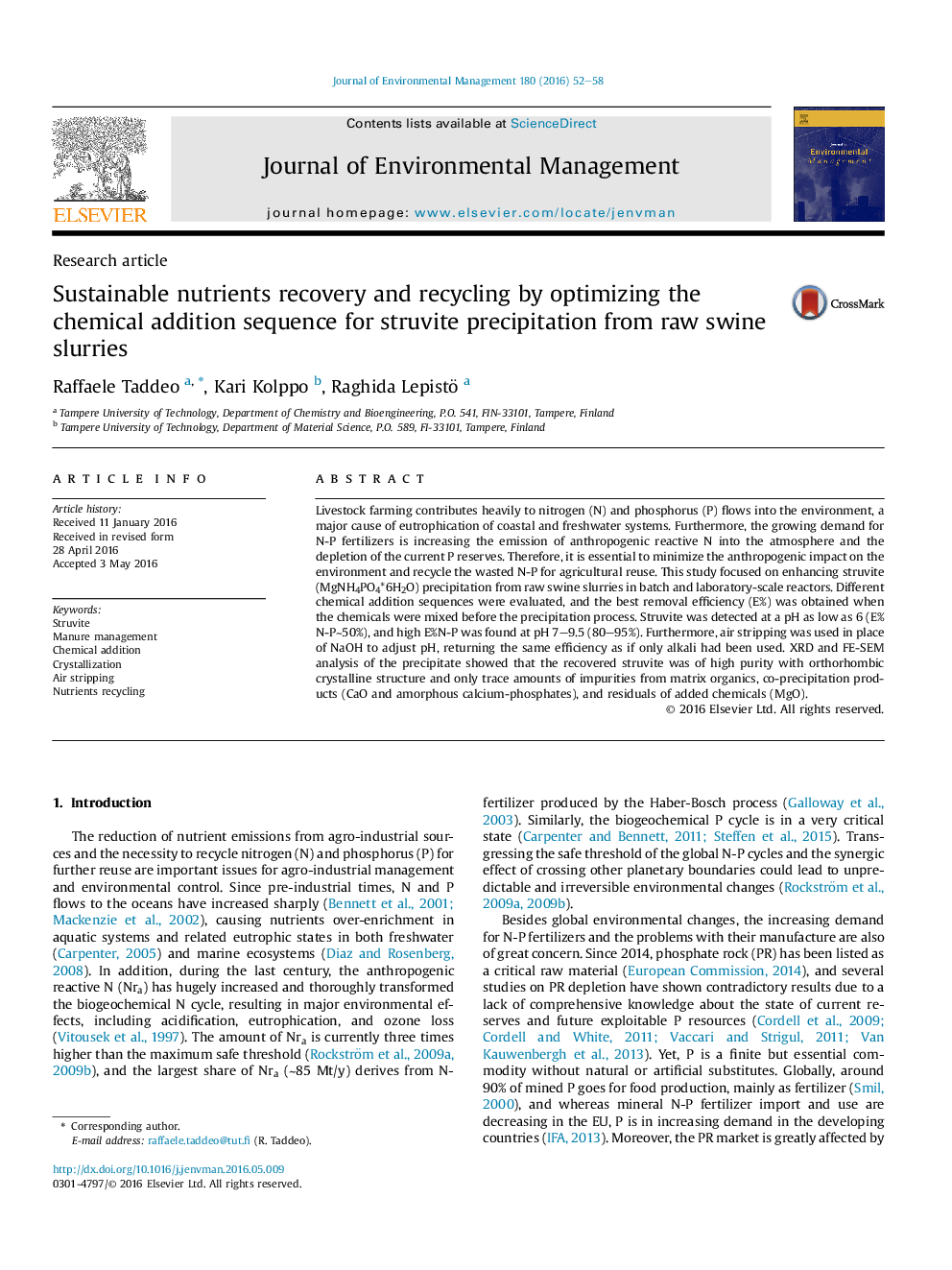| Article ID | Journal | Published Year | Pages | File Type |
|---|---|---|---|---|
| 7479942 | Journal of Environmental Management | 2016 | 7 Pages |
Abstract
Livestock farming contributes heavily to nitrogen (N) and phosphorus (P) flows into the environment, a major cause of eutrophication of coastal and freshwater systems. Furthermore, the growing demand for N-P fertilizers is increasing the emission of anthropogenic reactive N into the atmosphere and the depletion of the current P reserves. Therefore, it is essential to minimize the anthropogenic impact on the environment and recycle the wasted N-P for agricultural reuse. This study focused on enhancing struvite (MgNH4PO4*6H2O) precipitation from raw swine slurries in batch and laboratory-scale reactors. Different chemical addition sequences were evaluated, and the best removal efficiency (E%) was obtained when the chemicals were mixed before the precipitation process. Struvite was detected at a pH as low as 6 (E%N-Pâ¼50%), and high E%N-P was found at pH 7-9.5 (80-95%). Furthermore, air stripping was used in place of NaOH to adjust pH, returning the same efficiency as if only alkali had been used. XRD and FE-SEM analysis of the precipitate showed that the recovered struvite was of high purity with orthorhombic crystalline structure and only trace amounts of impurities from matrix organics, co-precipitation products (CaO and amorphous calcium-phosphates), and residuals of added chemicals (MgO).
Related Topics
Physical Sciences and Engineering
Energy
Renewable Energy, Sustainability and the Environment
Authors
Raffaele Taddeo, Kari Kolppo, Raghida Lepistö,
